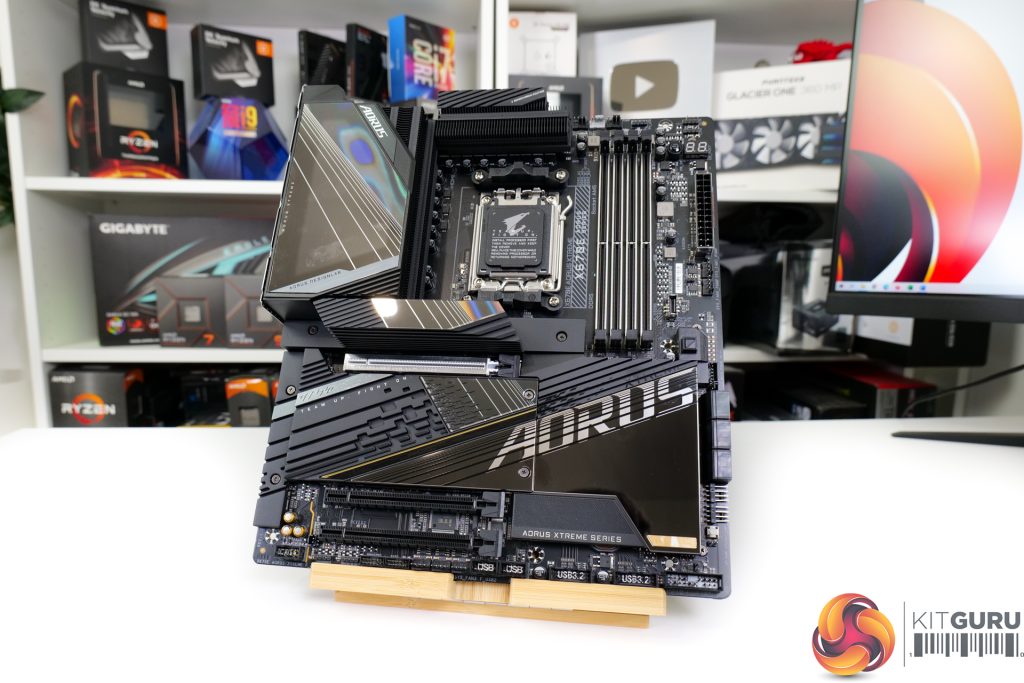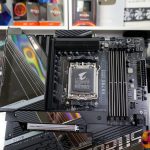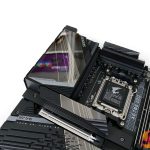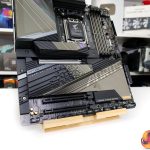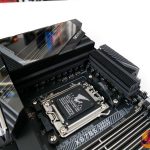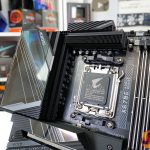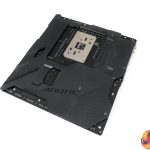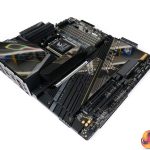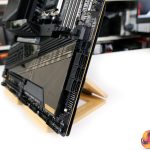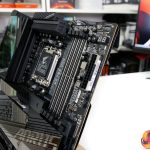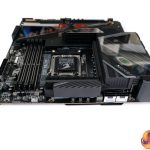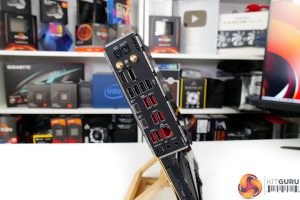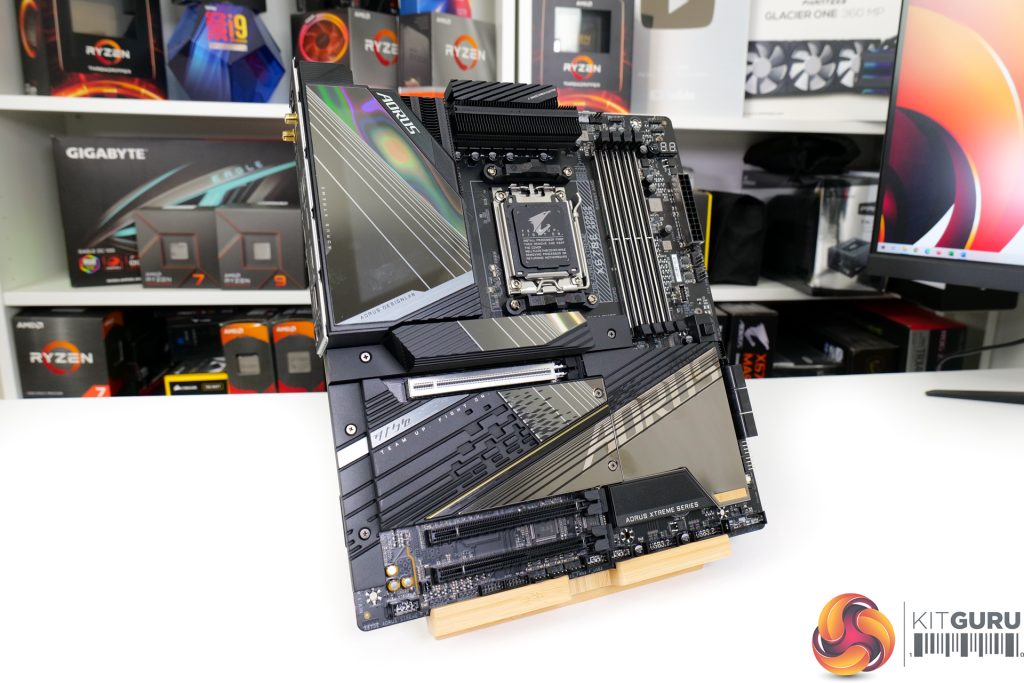Let’s start out with the flagship X670E Aorus Xtreme.
Appearance-wise, this £780 E-ATX motherboard is an absolute stunner. We get an overall dark black colour scheme with shades of grey and reflective elements on the PCB-covering heatsinks.
Speaking of heatsinks, Gigabyte has gone pretty crazy here.
Large slabs of metal cover the X670E chipset and four PCIe Gen 5 M.2 connectors, and you get an even taller chunky cooling block for the primary PCIe Gen 5 M.2 device.
Plus, a meaty rear-IO cover with Aorus Animated Display sits above the well-designed VRM fin array that features a nanocarbon coating and an 8mm heatpipe
Underneath that MOSFET fin array – that looks to be highly proficient on the face of it – is a Direct 18+2+2 digital VRM design. Gigabyte is using 105A power stages for the VCore VRM, and this power delivery hardware sits on the 8-layer, low-loss copper PCB.
One of the points that I really like is that the metal backplate make contact with the rear MOSFET section via thermal pad. This means that the backplate is more than a structural rigidity enhancement. It also provides some cooling benefit by shifting heat away from the rear area of the PCB.
When looking at the connection slots, we have this thick, armoured PCIe Gen 5 x16 slot that is fed directly from the AMD CPU. This is the slot you’ll want to use for a graphics card, and that really shows as it is very well armoured for modern, uber-heavy boards from the likes of Gigabyte’s Aorus range.
All four of the dual-channel DDR5 DIMM slots also feature metal bracing to enhance their durability.
There are enough onboard connectors on the motherboard to keep even the most niche of users happy. Six SATA ports is ample in today’s market and there’s a front-panel USB Type-C header running at 20Gbps.
RGB and fan headers are plentiful, and they’re distributed across the PCB in an effective manner, including with right-angled orientation. Plus, there are diagnostic LEDs and onboard voltage monitoring points for tinkering users.
And the rear IO connectivity is simply superb! There’s plentiful USB Type-A connectivity including Q-Flash Plus support. Plus, you get dual USB Type-C ports, one of which is 20Gbps.
Networking connectivity is appealing, with 802.11ax WiFi 6E as well as an Aquantia 10Gb Ethernet port.
Video outputs in the form of HDMI and Displayport will likely be reserved for diagnostic or short-term purposes on this type of motherboard, which is fine. And the large Q-Flash Plus and Clear CMOS buttons are two inclusions that anybody who likes messing with their system will love to see.
So, that’s the initial – brief – overview of Gigabyte’s X670E Aorus Xtreme. This is one heck of a motherboard with a clearly overbuilt design and some outstanding specifications.
 KitGuru KitGuru.net – Tech News | Hardware News | Hardware Reviews | IOS | Mobile | Gaming | Graphics Cards
KitGuru KitGuru.net – Tech News | Hardware News | Hardware Reviews | IOS | Mobile | Gaming | Graphics Cards


